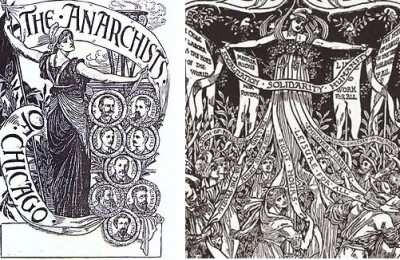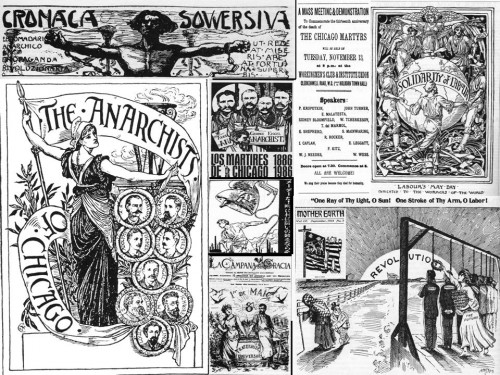
Earlier this week the Committee Study of the Central Intelligence Agency’s Detention and Interrogation Program, more commonly known as just “The Torture Report” was declassified and made public and like many people I downloaded it. But given that it is a 525-page behemoth of documented state violence, most people are going to understandably look for summaries and analyses, letting other people do the hard work of pulling out important passages from the heaping pile of passive voice and bureaucratic jargon. While the report is deeply disturbing, the mainstream attention it has been getting is somewhat heartening. What might have dominated, but ultimately fallen out of, a couple of rapidly shifting news cycles has exploded over my Tumblr dashboard and Twitter feed in a constant stream of tiny, comprehensible bites of war crimes. Consuming national disgrace in small pieces isn’t necessarily new, it is the primary way the public learns about abuses of power.
I have a mostly unread 9/11 report on my shelf (should have bought the graphic novel adaptation), and I grew up in a house that had a handsomely bounded copy of the Warren Commission Report that details the assassination of John F. Kennedy. Government documents that cover national tragedy are peculiar documents: they are both truth-defining documents and somber, paper memorials that sit in your home. But the torture report is more akin to The Church Committee reports on COINTELPRO, or the Senate Watergate Committee. Confessionals told by and to bureaucracies that, on the surface, claim to act as immune system responses that will prevent future corruption, but really act more like public relations memos to politicos. It strikes off one form of violence and demands that lawyers and deep state apparatchiks find a new way to maintain order. Use signature strikes from drones instead of rendition and torture; vacuum up and duplicate the entire internet instead of spying on a select few leftists; and make spying on the other party’s campaign obsolete by colluding on which issues you’ll talk about and which ones you’ll ignore completely.
The left has a print culture of dissecting big and complicated abuses of power and making them readily understandable to the lay public. Immediately after the Haymarket Affair, in which anarchist were blamed for setting off a bomb that killed and injured police officers who were advancing on a labor demonstration in Chicago. Historians cite this as one of the first globally-covered news stories, most of which was done by small-circulation partisan newspapers that had a keen awareness of how their audiences consumed information. The subsequent arrests and hangings of anarchists in connection to the bombing were depicted in eye-catching images and easy-to-read prose.

The Haymarket Martyrs as they came to be called, had to be introduced to the world through highly partisan papers that either romanticized their deaths or exaggerated their influence (think Benghazi, but 19th century). Today, mainstream news outlets like The Daily Dot and Gawker are compiling and curating pieces of the Torture Report and sending them out in highly shareable photo memes. Adam Weinstein has collected tweets that reference specific passages into what he calls a “Guide to CIA Torture and Its Sick, Sad American Apologists” (warning: a particularly gruesome image is at the top of this pos). The Daily Dot‘s Aaron Sankin has put together a more sardonic post where facts gleamed from the Torture Report are written across images of George W. Bush. (The image at the top of this post is one of eleven such memes.)
I think it is actually a triumph that mainstream news outlets have started to do what only marginal radical newspapers have been doing for over a hundred years. This is the way lots of people have learned about abuses of power and injustice for a very long time and the more of it, in my opinion, the better.
Both of these pieces, which are just two prominent examples of fairly wide-spread media coverage, are best understood as a continuation of those Haymarket cartoons. While they don’t romanticize the victims of torture like some of the partisan newspapers did, they do offer tangible fodder for sharing and raising awareness of a terrible miscarriage of justice. While some of them may be crude, and there will be the inevitable partisan spinning of what is ultimately a bipartisan war crime, we should be looking for more and better memes to sit alongside the well-researched essays and reporting that is also sure to come. We should remember that both long-form original reporting and shareable memes serve complimentary purposes. The latter shouldn’t be thought of as making light of the issue or dumbing it down. This is a common instantiation of the vox populi and it as old as mass media itself.
Follow David on Twitter, Tumblr, Ello, and now This.



Comments 2
Atomic Geography — December 12, 2014
David, your parallel with the Haymarket Affair is apt and interesting.
In my teenage house in the 60's there was a copy of the Warren Commission Report too, but it was in paperback and dog-eared. Alongside it, equally dog eared, was the Kerner Report on the inner city riots of the time.
I think it may be worthwhile to add this report to the historical perspective you are beginning to develop here. Like The Torture Report, the Kerner Report was criticized for starting with a conclusion ("there is white racism" and "the US tortured") and working from there. In both cases focusing on these "unsupported assumptions" provided a distraction to the main points.
Certainly if we had the concept of memes back then, commentators might have employed it to describe the role of popular narratives about race. The Kerner Report in fact does have a section on the subject.
Finally, there is the question of the future. Will in 40 years people look back on the Torture Report and say how relevant it still is? http://www.huffingtonpost.com/james-meyerson/what-is-the-kerner-commis_b_5686572.html